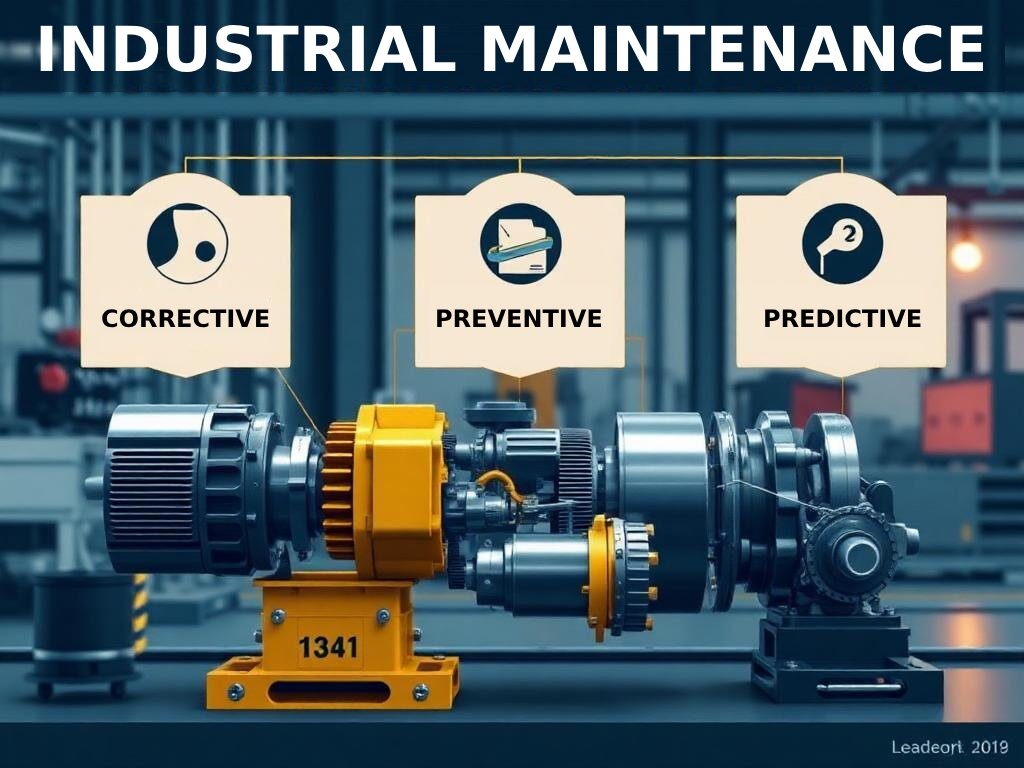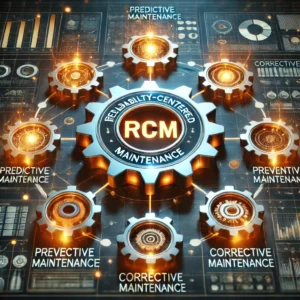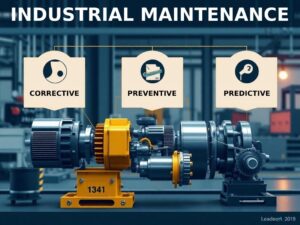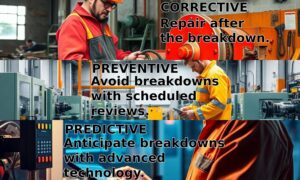In industrial maintenance, categorisations have evolved as technologies and approaches have improved. A recurring discussion revolves around the classification of maintenance, specifically how the concepts of predictive maintenance and reliability-centred maintenance fit into traditional schemes.
We have discussed this topic in previous articles and on several occasions. In our article: “Industrial Maintenance: Preventive, Corrective and Predictive” (in Spanish) we talked about the classification of industrial maintenance according to these levels.
We have also developed more detailed theoretical particularisations of these divisions, such as in “Types of preventive maintenance and how to implement them” (in Spanish). . Another article in this series is “The importance of predictive maintenance” (in Spanish).
Now we are going to delve deeper into the idea by defending how we understand the classification of maintenance. To do this, we will use the guidelines of the ISO 14224 standard as a starting point and explore an alternative proposal that combines practice and theory. It is the latter that we will defend.
 What is ISO 14224:2016 and what does it cover?
What is ISO 14224:2016 and what does it cover?
Before we start our approach, we should develop the framework for reflection. This is important because the standard in question applies mainly to a number of sectors, although it is used to categorise industrial maintenance.
The ISO 14224:2016 standard regulates the collection and exchange of reliability, maintenance and availability data in industrial sectors such as oil, natural gas, petrochemicals and related energy. Its main objective is to provide a standardised framework for collecting, analysing and sharing useful data to improve maintenance management and decision-making based on asset performance.
And the benefits of implementing such a standard are undeniable, enabling us to
- Make informed decisions: Facilitates data analysis to optimise maintenance strategies.
- Benchmarking: Enables comparison of asset performance and strategies between different organisations or sectors.
- Risk management: Improves identification of critical issues and areas for improvement.
- Cost reduction: Promotes efficiency by identifying failure patterns and adjusting maintenance strategies.
Industrial maintenance, the ISO 14224 standard and its binary classification.
ISO 14224 divides maintenance into two main categories: corrective and preventive. This distinction is based on the timing of the maintenance in relation to the failure:
- Corrective maintenance: Interventions carried out after a failure has occurred, with the aim of restoring the functionality of the equipment.
- Preventive maintenance: Activities performed before a failure occurs to reduce the probability of the failure or mitigate its consequences. This includes
- Systematic maintenance: Based on time intervals or cycles of use.
- Conditional maintenance: Based on monitoring the actual condition of the equipment.
Within this structure, the standard does not explicitly mention predictive maintenance, considering it to be part of conditional maintenance. In practice, however, predictive maintenance has acquired its own identity due to the development of technologies that allow real-time monitoring of the condition of the equipment. For this reason, we consider it a higher level than preventive maintenance. Let’s develop this idea.
Predictive maintenance: A category of its own in industrial maintenance?
Predictive maintenance uses advanced tools such as vibration analysis, ultrasound or thermography to identify patterns that predict failures before they occur. Although it can technically be considered a subset of conditional preventive maintenance, its data-driven approach, reliance on advanced technologies and significant impact on resource optimisation justify treating it as a separate category.
Predictive maintenance overcomes the limitations of systematic preventive maintenance by adapting to the actual condition of equipment, reducing unnecessary interventions and extending the useful life of assets. For these reasons, we advocate the recognition of predictive maintenance as a separate category within industrial maintenance strategies.
 Reliability-centred maintenance: A Strategic Framework
Reliability-centred maintenance: A Strategic Framework
Many theories consider it a new level within the classification of maintenance types, but we lean towards those that disagree.
Reliability-centred maintenance (RCM) is not a type of maintenance per se, but a strategic approach that integrates different maintenance strategies (corrective, preventive and predictive) according to the criticality of the equipment and the consequences of its failures (sudden or potential).
Its aim is to maximise operational reliability while optimising costs.
RCM analyses
-
-
- The main functions of each piece of equipment.
- The failure modes and causes.
- The consequences of these failures.
- The most appropriate maintenance strategies in each case.
-
RCM is not just another category, but a methodology for deciding when to apply corrective, preventive or predictive maintenance. Its nature covers the whole spectrum of strategies and promotes a personalised and efficient approach.
 Suggestion: Three types of maintenance, one strategic framework.
Suggestion: Three types of maintenance, one strategic framework.
Although some texts advocate a division of maintenance into four categories (corrective, preventive, predictive and reliability-focused), we consider it more coherent and practical to approach the classification as follows:
- Corrective maintenance: To restore operability after a failure.
- Preventive maintenance: To prevent failures, subdivided into systematic and conditional.
- Predictive maintenance: An evolution of conditional preventive, with technologies that allow data-based intervention.
And as an integrating framework:
- Reliability-focused maintenance: A strategic approach that optimises the application of maintenance types based on criticality and operational objectives.
The evolution of industrial maintenance strategies reflects advances in technology and methodology. In this line, we recognise Predictive Maintenance as a category in its own right and understand RCM as a strategic framework that allows for more efficient management in line with the current needs of companies.
At GDM, we believe in the importance of clarifying and embracing these distinctions in order to provide maintenance solutions that increase asset productivity and reliability.
And remember that in GDM you have an ally to help you maintain your servo systems, robotics and industrial electronics.
If you have any questions, please ask us here. We will respond quickly.





